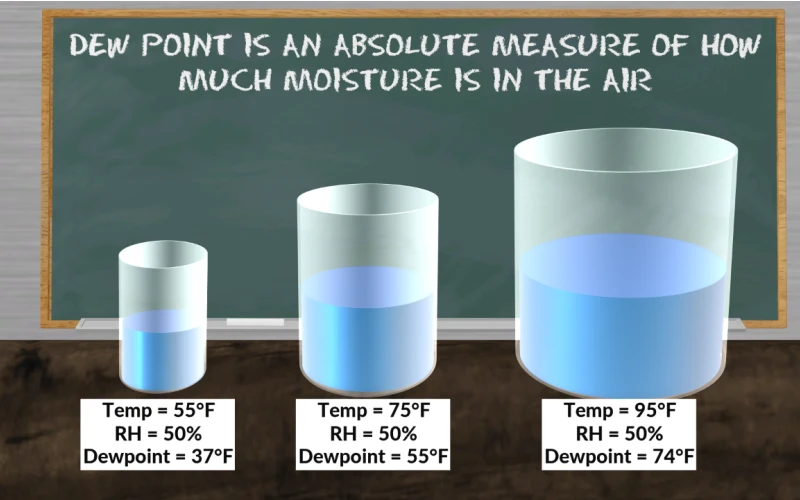
# High Dew Point Impact on Human Comfort and Health
## Understanding Dew Point and Its Significance
The dew point is the temperature at which air becomes saturated with water vapor, leading to condensation. When we talk about a high dew point, we’re referring to conditions where the air holds a significant amount of moisture. Unlike relative humidity, which changes with temperature, the dew point provides a more consistent measure of atmospheric moisture.
## How High Dew Point Affects Human Comfort
A high dew point creates uncomfortable conditions because it affects our body’s natural cooling mechanism. When the dew point rises above 65°F (18°C), most people begin to feel discomfort. At levels above 70°F (21°C), the air feels oppressive and sticky.
Our bodies rely on sweat evaporation to cool down. In high dew point conditions, the air is already saturated with moisture, making it difficult for sweat to evaporate effectively. This leads to that familiar “sticky” feeling and makes physical activity much more taxing.
## Health Risks Associated with High Dew Point
Extended exposure to high dew point conditions can pose several health risks:
Heat-Related Illnesses
When our cooling mechanisms fail, we become vulnerable to heat exhaustion and heat stroke. These conditions can be life-threatening if not addressed promptly.
Respiratory Problems
High moisture levels can exacerbate respiratory conditions like asthma and allergies. Mold and dust mites thrive in humid environments, worsening air quality.
Cardiovascular Stress
The body works harder to maintain its core temperature in high dew point conditions, putting additional strain on the cardiovascular system.
## Vulnerable Populations
Certain groups are particularly susceptible to high dew point effects:
- Elderly individuals
- Young children
- People with chronic illnesses
- Outdoor workers
- Athletes
## Mitigation Strategies
To cope with high dew point conditions:
Indoor Environment
Use air conditioning or dehumidifiers to maintain comfortable indoor conditions. Keep humidity levels between 30-50% for optimal comfort.
Hydration
Drink plenty of water to compensate for increased fluid loss through perspiration.
Activity Adjustment
Limit strenuous outdoor activities during peak heat and humidity hours, typically midday.
Appropriate Clothing
Wear loose, lightweight, and moisture-wicking fabrics to help with evaporation.
## Conclusion
High dew point conditions significantly impact human comfort and health by interfering with our natural cooling processes. Understanding these effects and implementing appropriate strategies can help maintain well-being during periods of high atmospheric moisture. As climate patterns change, awareness of dew point effects becomes increasingly important for public health.
Keyword: high dew point